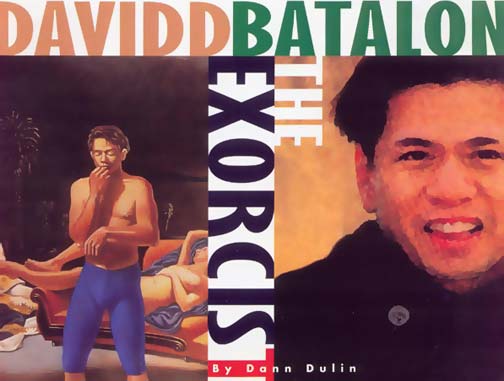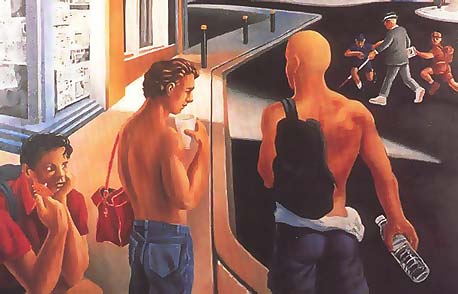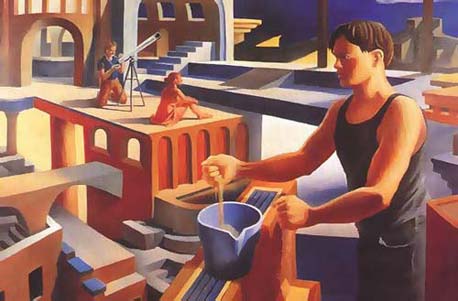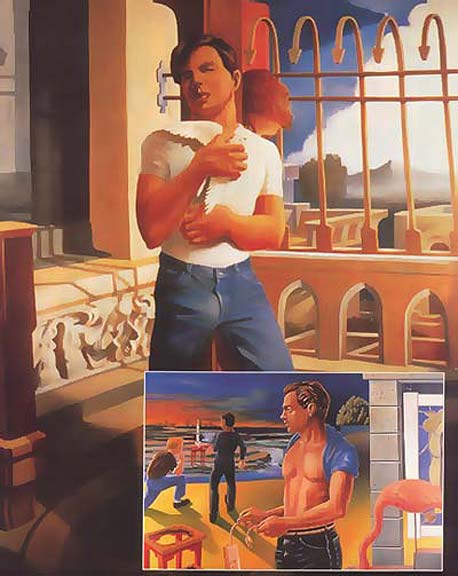
|
|
|
In Davidd Batalon's small, furnished 1920s Hollywood courtyard apartment, just off Melrose Avenue, wall-sized unframed paintings are stacked alongside the walls, and some are hung throughout his living space. His home has the feel of an art gallery. No wonder. This is both his studio and living quarters. His palette and brush lie just one stroke away from him. Batalon, 39, embraced art from the very beginning, but he didn't realize the extent of his talent until he started school. "I thought all kids drew like me. But then I realized when I drew a dinosaur it looked like a dinosaur, not a warthog, or a log with legs," he chuckles. His work became the only medium in which he could express his feelings of isolation as a Filipino in the predominantly white neighborhood of Yorba Linda in Orange County. He remembers often waking up to the sound of rocks and Oreo cookies hitting the patio roof. The local kids would shout "Move out! Go back to Japan!" The issue of his homosexuality made Batalon feel like even more of an outsider. "I knew I was gay in the sixth grade," he says. "I was always the kid in the back of the class who drew on desks just to tell people that "here I am, I'm alive." Batalon's parents, who own and manage a gas station, urged him to be a doctor, but "there were no if, ands, or buts" about his desire to pursue his artistic calling, he says. He ended up graduating with a master's degree in fine arts from California State University at Fullerton. Batalon's paintings reflect the different stages of his life. "in my earlier works there's a feeling of suppression because I was in the closet at the time." He looks back on the works now and sees great tension in them—with a mixture of implied eroticism. "Like the way a person will hold something, or a slight angle to the body that just kind of suggests a sensuousness of the male form that I wasn't even aware of doing at the time," he explains. "A lot of subliminal movements come out regardless of whether I wanted them to or not. In later works I can see myself loosening up as I started coming out more." Batalon has been described by critics as the Thomas Hart Benton and Paul Cadmus of the baby boomers. His work is influenced by Edward Hopper's use of light, and by George Tooker. "I remember being fascinated by his images because they were just so mysterious and alluring." His favorite artist remains Ingres, who Batalon observes, "does something with the female form that is unusual and timeless. It's that slight abstraction of form that makes you do a double-take whenever you look at his work." Batalon admits that his craft, which is a joy to him, is also therapeutic. He tends to do his painting late into the night when he finds it more peaceful. "Painting exorcises a lot of psychic energy that needs to go somewhere. Some people go out and play volleyball, or ride dirt bikes. I just go to the canvas and let it out." |
Oils on Canvas |
 |
"Leaving to Anywhere" |
 |
"Dust from a Distant Sun" |
|
|

|
"Bird in the Hand" and "Jumpsport" |
|
|
|
|
Self-Expression;
|